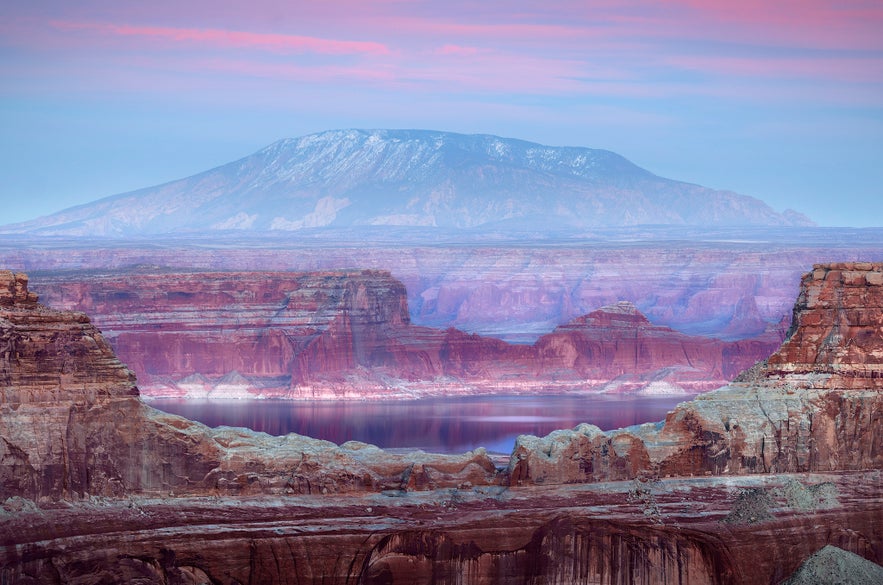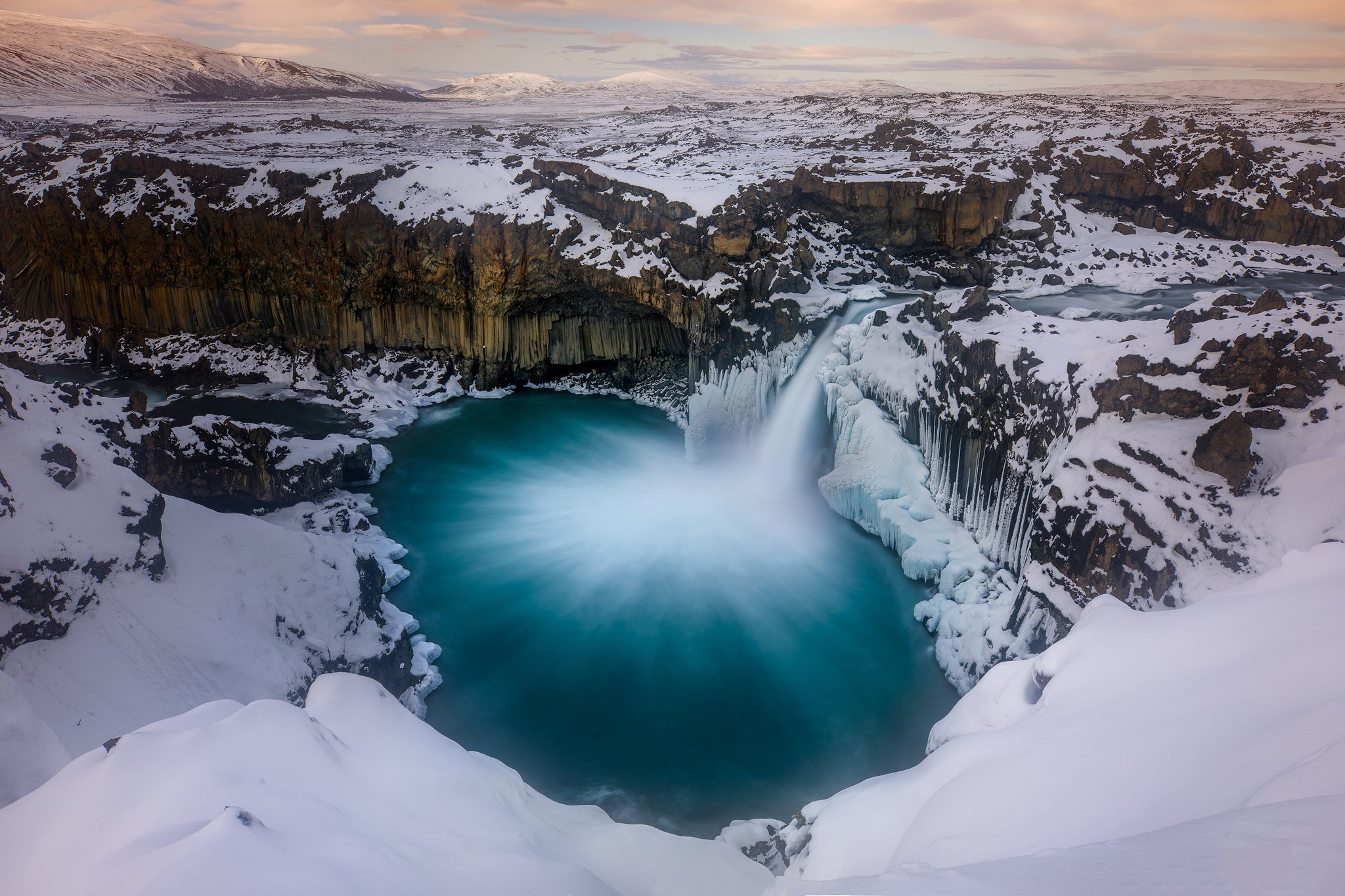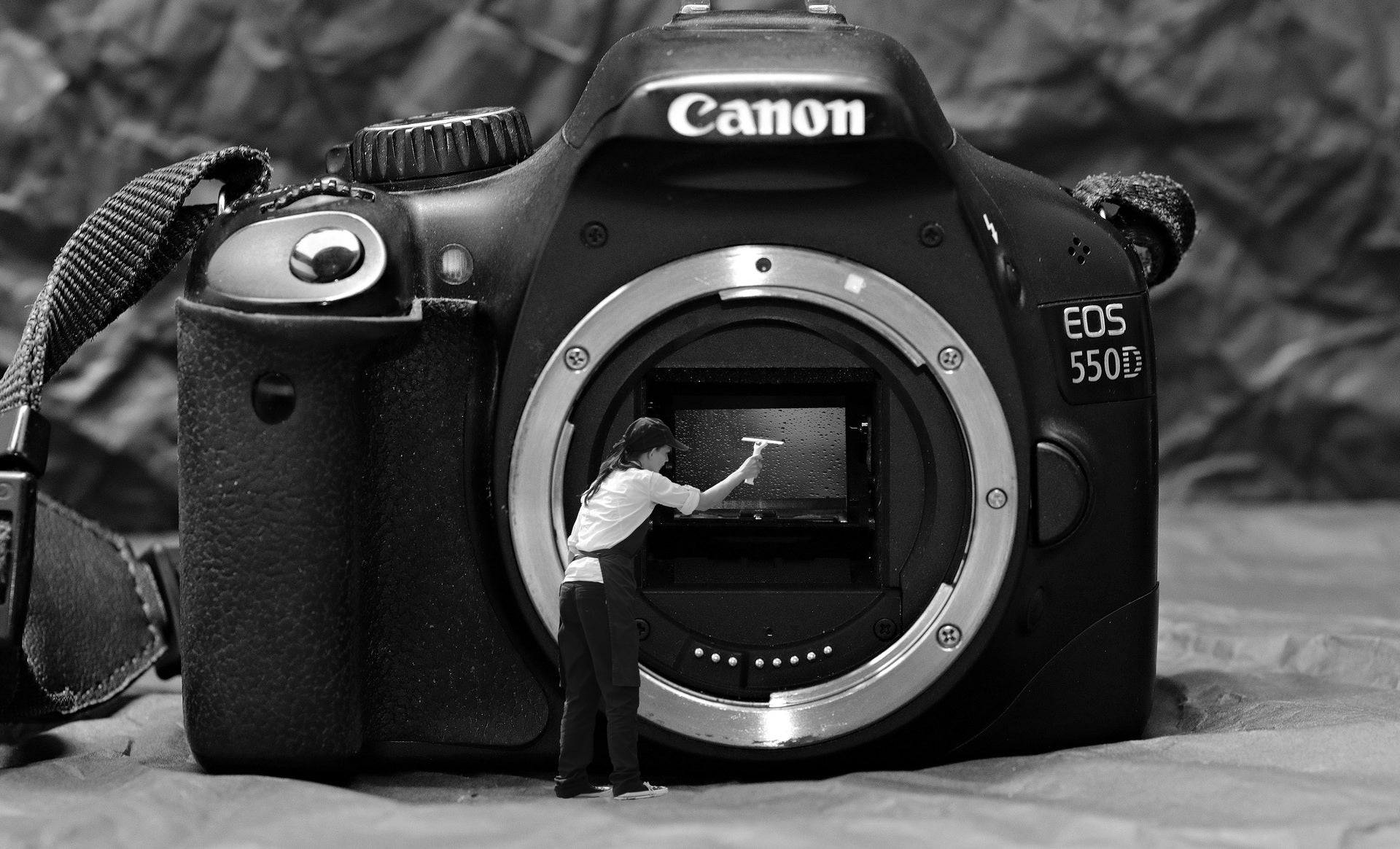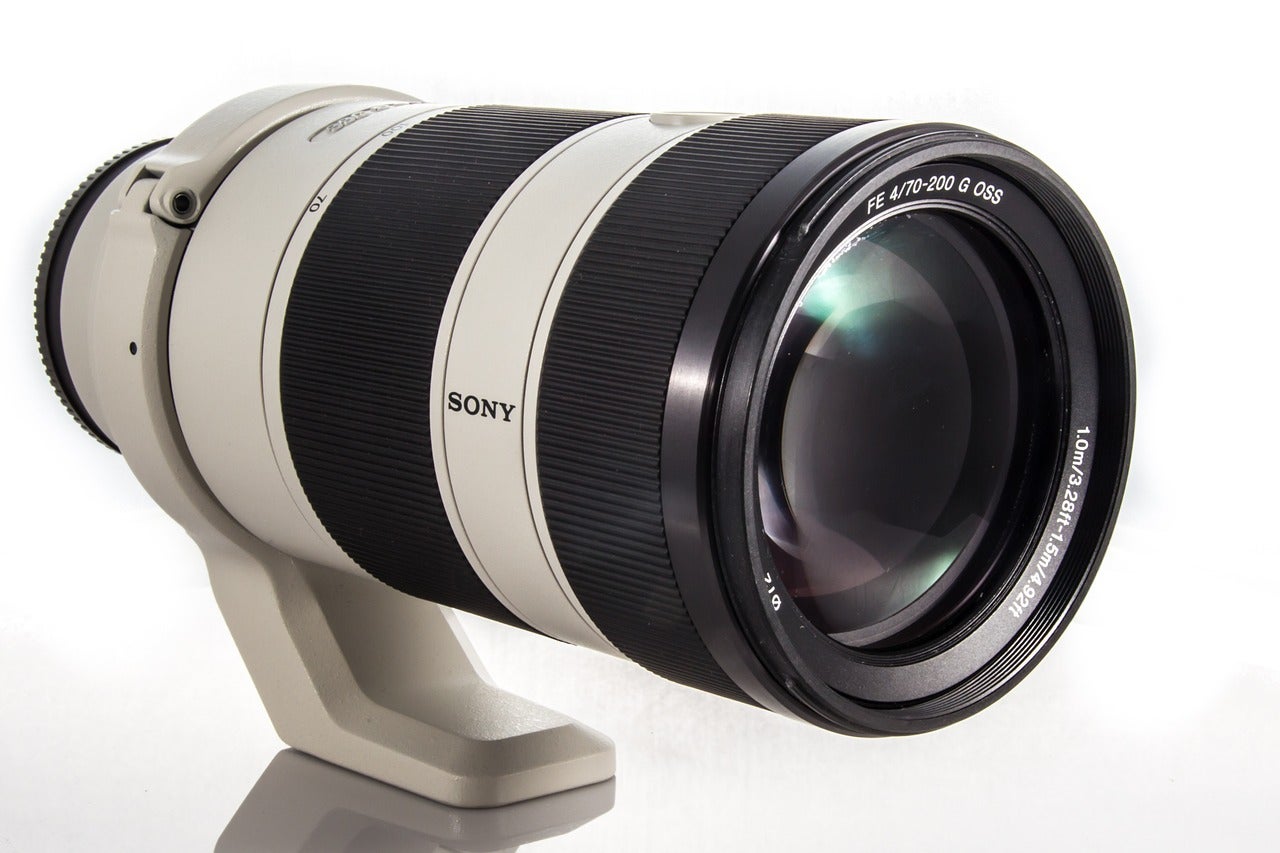
What is focal length? Technically, in terms of camera lenses, it is a complex measurement that you will need to study optical engineering to fully understand. Thankfully, you won't have to go back to university because there's a quicker way to get the gist of it. Basically, the focal length is the distance in millimetres from the optical centre (or nodal point) of your lens to the image plane inside the camera when the lens is focused on infinity.
- Learn How to Minimise and Clean Camera Sensor Dust
- Join us on this 2-Day Snaefellsnes Peninsula in Summer Photography Tour
I know that may sound a little bit like gibberish for now but in this article, I'll talk about what focal length means to a photographer and how the lens that you choose to use can affect your landscape photography. By the end, you'll have a good understanding of what focal length to use for different types of shooting situations!
Focal Length and Lenses
The focal length is extremely important because it represents the field of view of your lens – that is, what you will see through it when capturing an image. Most lenses have a focal length between 12mm and 600mm, though there are some special exceptions that we'll talk about later.
In general, the lower the number of the focal length, the wider field of view you will have. The larger the number of the focal length, the narrower (or more magnification) the lens will have. For example, when you look through a 16mm lens, you can see a very wide angle of view showing things very close to you and far out. When you look through a 300mm lens, you will see things at a long distance closely. This is a very important tool when taking photographs because it can give you the power to frame a scene however you want and need, simply by changing the field of view.
Here is a chart showing a big range of focal lengths from 16mm to 300mm, where you can see the differences that each focal length has upon the scene. These photos were taken on a tripod in the exact same position with the keyhole rock centred in the frame. In the wide angle focal lengths, you can see the entire scene – the ocean, horizon, the sky above, and even a little of the railing around the bluff. However, as the focal lengths increase, we begin to lose the surrounding area and eventually only the rock and ocean is in the frame.
 Differences in the scene when shot at 16mm all the way through to 300mm. Photo by: 'Sean Ensch'.
Differences in the scene when shot at 16mm all the way through to 300mm. Photo by: 'Sean Ensch'.
The Relationship Between Focal Length and Shutter Speed
Something to keep in mind when you are out shooting is the relationship between focal length and shutter speed. While they don’t directly affect one another, they can have an impact upon camera shake, particularly if you'll be shooting handheld.
The wider your frame of view, the less effect that vibration will have upon your images. As you increase your focal length though, any movement or vibration will become exaggerated.
A good way to understand this is just to look through your camera at a wide focal length and hold the camera as still as possible. It’s pretty easy to do and everything seems still, right? Now switch to a 200mm lens and try to hold it in position as you point it at an object. You’ll notice that your hands seem to be shaky now. Holding your camera by hand when shooting isn’t the best option but it is sometimes necessary, so watch your shutter speed to make sure it is fast enough to keep your images free of blur.
The general rule of thumb is that you should set your shutter speed to around one fraction of your focal length. For example, if you are shooting at 100mm, then your shutter speed should be at least 1/100th of a second. Some new lenses have “vibration reduction” or “image stabilisation” functions built in which help to improve the effect that camera shake has upon your images. However, it's still a good idea to stick to this general rule when shooting handheld, though I highly recommend that you use a tripod whenever you can.
How Do Different Focal Lengths Affect Your Landscape Photography?
Different focal lengths have a massive effect on your landscape photography. They can completely reshape how a scene looks, particularly in terms of distance, position and angle. You can also create some very interesting forms of distortion depending on the focal length that you choose to use.
Ultra Wide Focal Lengths
These types of lenses generally fall between 8-16mm and can create such a wide angle of view that you'll end up with extreme perspective distortion. This happens with ultra wide angle lenses because the angle of view is so large that things that are closer to the lens will seem bigger (as they’re so close) while things that are further away will appear smaller.
When the angle of view is this extreme, it can put a bend on straight lines such as the horizon or trees, as the image will wrap around the sensor. To give you an example, you can see a perfect example of distortion caused by wide angle lenses in the image below. I took this photo at 14mm from about 1 metre above the ground. The wide angle of view caused the trees to slant inward. They appear to get thinner as they get further away from the camera due to the perspective distortion.
 Perspective distortion caused by an ultra wide angle lens. Photo by: 'Sean Ensch'.
Perspective distortion caused by an ultra wide angle lens. Photo by: 'Sean Ensch'.
Wide Focal Lengths
Wide focal lengths fall within the 16-35mm range. They still cause perspective distortion but less so than the ultra wide lenses.
These lenses are very useful for capturing big and expansive views of a scene or when you are close to an object but want to get it all in frame. You can also use the distortion to your advantage when you want to include foreground elements that will really pull the viewer into an image whilst maintaining a significant depth of field. This technique works well for small elements like the dandelion puffs surrounding the old log cabin in the image below, which was taken at a focal length of 17mm.
 Dandelion puffs captured with a wide angle lens at 17mm. Photo by: 'Sean Ensch'.
Dandelion puffs captured with a wide angle lens at 17mm. Photo by: 'Sean Ensch'.
Medium Focal Lengths
Medium focal lengths fall anywhere within the 35mm to 70mm range. This range is the most similar to what we see with our own eyes. In general, human eyesight is equivalent to about 50-70mm on a full frame camera.
This focal length is great for walking around. You can frame photos quickly as the image will largely resemble what your own eyes see in your surrounds. The image below was taken at 70mm as I was walking through the sand dunes during sunrise in Death Valley, California. This particular image was taken handheld – it was just a simple snapshot as I was on the move at the time.
 Medium focal lengths are great for when you're on the move. Photo by: 'Sean Ensch'.
Medium focal lengths are great for when you're on the move. Photo by: 'Sean Ensch'.
Focal Lengths of 200mm or Higher
Focal lengths of 200mm or higher, otherwise known as telephotos, are the most under-utilised in the realm of landscape photography. I’ve noticed that as landscape photographers, we often fixate on what is immediately around us when shooting instead of looking beyond.
Higher focal lengths will help you to clear distance when needed, giving you the exact opposite of what you'd achieve with a wide angle lens. Where wide lenses exaggerate foreground elements and can dwarf backgrounds, higher focal lengths can compress the landscape because you are further away in distance from the subject. As such, they will allow you to demonstrate a greater sense of scale within your photographs.
To give you an idea of what you can do with a longer focal length, take a look at the image below. This was shot from the rim of a canyon using a 200mm lens, which allowed me to capture the layers and to highlight the massive scale of the canyon and rock formations. If I had used a wide angle lens instead, then these formations would have appeared as distant objects in the background.
 A longer focal length will allow you to compress the scene. Photo by: 'Sean Ensch'.
A longer focal length will allow you to compress the scene. Photo by: 'Sean Ensch'.
Macro Lenses
A macro lens is used for photographing subjects which are extremely close and small. They are wonderful for capturing abstract images, such as textures in nature, rocks on the ground, or even the bark on a tree. These lenses are also great for photographing small insects up close and personal. The reason for this is that macro lenses have an extreme magnification level, which means that you can focus on a point very close to the lens.
- See also: The Best Lenses for Wildlife Photography
The Best Focal Length for Landscape Photography
In my opinion, there is no perfect focal length for landscape photography. The best will be what you need at the time for the circumstances in which you'll be shooting! When you are at one location, the best focal length may be a 14mm lens to capture a tight foreground whereas at the next location, you may want to capture a mountain peak in the distance. You'll find then that your wide angle lens becomes useless as you're standing so far away, so the best focal length for that situation may be a 200mm lens.
The best focal length isn't a particular number. Instead, it's about being prepared for what you want to achieve. This means that you should invest in a good set of lenses to cover all of the focal lengths that you find yourself mostly shooting with. Many people still believe strongly in prime lenses as they tend to be sharper, however, I think modern zoom lenses have gotten so good that the tiny sharpness you gain from prime lenses isn’t worth the loss of versatility from a zoom lens.
Here are my recommendations for a set of lenses to fit in your landscape kit:
-
Wide angle lens at 12-24mm or 16-35mm for capturing expansive scenes, foreground interest or night shooting.
-
Mid range lens of around 24-70mm, which will be great for when you are out and about and don’t have time to change lenses all the time. I call this the “walk around lens”. This focal range covers a lot and is very useful.
-
Long lens of 70-200mm, which is often described as the best telephoto lens for landscape photography. This will cover your distance needs well when shooting mountains and even wildlife.
These three lenses should be the kit for landscape photography 101. They will cover your bases on almost any images you want to create by allowing you to shoot at all of the most common focal lengths required for a general scene. Outside of these, you might choose to invest in a higher telephoto focal range if you want to capture wildlife, such as a 300mm to 500mm.
- See also: Best Lenses for Night Photography
Conclusion
When I first started shooting landscapes, I used to hear people talking about wide lenses almost all of the time. Everything seemed to be shot with a 14mm or 16mm and it seemed like people associated wider focal lengths with how much better their photos were going to be.
I remember that during my first year of really trying to shoot landscapes, I ran around with a wide angle lens almost exclusively. Shooting with a higher focal length almost didn't even occur to me when I was looking for compositions. This actually shaped my mindset while on location – I found myself looking for compositions that were physically close to me. In hindsight, this was incredibly limiting for my creativity. After some experience, I learned more about different focal lengths and how useful they could be.
 Different focal lengths are best for different applications. Photo by: 'Sean Ensch'.
Different focal lengths are best for different applications. Photo by: 'Sean Ensch'.
It was a real turning point for me when I noticed that one lone tree in the middle of a field, far away in the distance. I began to think how amazing it would look, cropped tightly with the mountain behind it looming over. I also noticed the tip of the mountain peak in the image above, with the moon gliding by. It opened up endless options to photograph and really pushed my creativity.
In photography, landscape included, we can all fall into creative patterns. Your mind will start to look for the same types of scenes, compositions and shapes. It’s not a bad thing but it can create repetition. A great way to break this repetition is to use different focal lengths. Doing so will force you to see the land in a new way and to look for different things. With that in mind, you will begin to see improvements in your work. So give it a try one day – walk around with a focal length that you feel you've never really made use of in the past and see what you come back with. It is a very fun and challenging experiment to undertake. Happy hunting!
About the author: Sean Ensch is a landscape photographer based in the USA. You can find more of his work on his website or by following him on Facebook and Instagram.
Have you got a new lens you'd like to try out? How about practicing with it in-field? Join one of our photography tours and workshops in Iceland. It's the best place to improve your photography skills!











